Implementing tips and ideas for apartment organization and storage can greatly enhance its functionality and create a clutter-free living space. Here are 10 tips explained in detail to help you get started:
Table of Contents
Declutter Regularly
Regular decluttering is essential for maintaining an organized apartment. Dedicate specific time intervals, such as once a month or seasonally, to go through your belongings. Assess each item and ask yourself if it is something you truly need or use. Consider donating or selling items that no longer serve a purpose in your life. Keep sentimental attachments in check and let go of things that no longer bring value or joy.

Here are some steps to help you declutter regularly:
- Set Goals: Define your decluttering goals and determine the areas you want to focus on. Start small by selecting a specific room, closet, or even a single drawer to declutter. Setting achievable goals helps you stay motivated and prevents overwhelm.
- Create a Decluttering Schedule: Dedicate specific times for decluttering in your schedule. It could be a weekly decluttering session or dedicating a few minutes each day to tackle a small area. Consistency is key to maintaining an organized home.
- Sort and Categorize: When decluttering, sort items into categories such as “Keep,” “Donate/Sell,” or “Discard.” Handle each item and ask yourself if it is something you truly need, use, or love. Be honest and let go of items that no longer serve a purpose or bring you joy.
- One-In, One-Out Rule: Adopt the “one-in, one-out” rule to prevent new clutter from entering your home. For every new item you bring in, commit to removing an equivalent item. This practice helps you maintain balance and prevents clutter from building up again.
- Start with the Easy Items: Begin decluttering with the easiest items first. This builds momentum and gives you a sense of accomplishment. Start with items that are obviously unnecessary or duplicates, as these are often easier to let go of.
- Create Decluttering Zones: Set up designated areas or boxes for different decluttering categories (e.g., donation, sell, recycle, trash). As you declutter, place items in their respective zones for easier organization and disposal later.
- Clear Countertops and Surfaces: Keep countertops and surfaces clear of unnecessary items. Limit decorations, appliances, and other items to those that serve a purpose or bring you joy. Store items that are not frequently used to maintain a clean and clutter-free appearance.
- Let Go of Sentimental Items: Sentimental items can be challenging to declutter. When dealing with sentimental possessions, ask yourself if the item truly brings you joy or if the memories associated with it can be preserved in a different way, such as through photographs or digital storage. Choose a few meaningful items to keep and let go of the rest.
- Donate, Sell, or Recycle: Once you have identified items to donate or sell, make arrangements to do so promptly. Consider local charities, thrift stores, or online platforms for selling unwanted items. Dispose of recyclable items responsibly to minimize environmental impact.
- Maintain Organization: After decluttering, maintain your newly organized space by putting items back in their designated places. Avoid accumulating unnecessary items and be mindful of what you bring into your home. Regularly reassess your belongings to ensure they still serve a purpose and align with your current needs and lifestyle.
Remember, decluttering is an ongoing process, and it’s normal for clutter to accumulate over time. By incorporating regular decluttering sessions into your routine and practicing mindful consumption, you can create a more organized and peaceful home environment.
Utilize Storage Solutions
Storage solutions are essential for keeping your belongings organized and out of sight. Invest in bins, baskets, and boxes that suit your needs and style. Use them to store items such as books, toys, accessories, or seasonal clothing. Clear, stackable containers are particularly useful as they allow you to see the contents while maximizing space. Label each container to easily identify its contents and make retrieval more efficient.
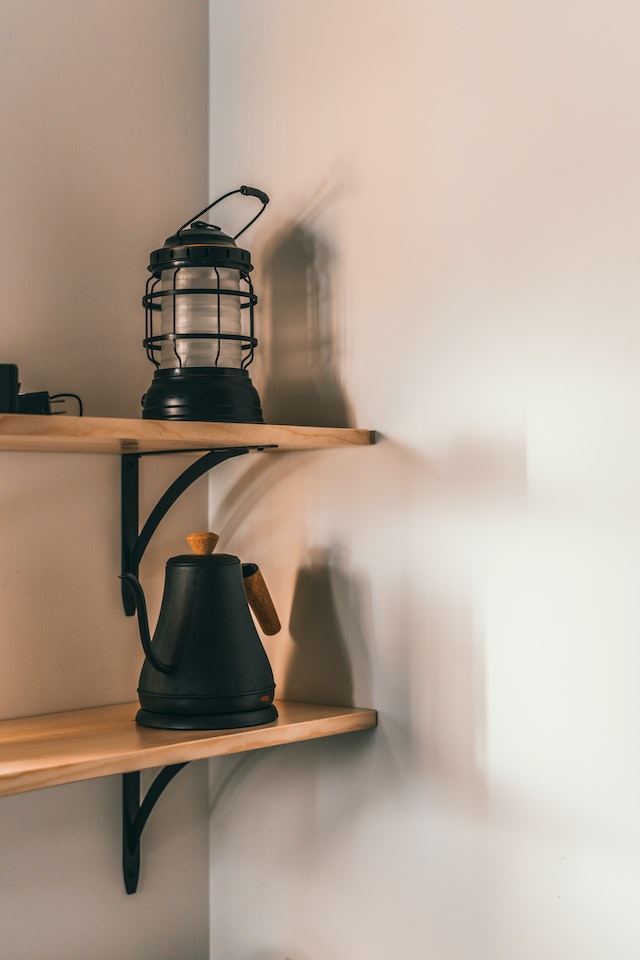
Here are some tips on how to make the most of storage solutions:
- Assess Your Storage Needs: Evaluate the storage needs of each room in your home. Identify areas where clutter tends to accumulate or where additional storage is required. Consider factors such as the types of items you need to store and the available space.
- Choose the Right Storage Solutions: Select storage solutions that are suitable for your specific needs. Consider options such as shelves, cabinets, bins, baskets, drawers, and organizers. Choose storage solutions that fit the available space and complement your home’s decor.
- Optimize Vertical Space: Utilize vertical space by installing shelves or utilizing tall cabinets and bookcases. Vertical storage helps free up floor space while providing ample storage capacity. Use shelves to display books, decorative items, or to store frequently used items.
- Use Multi-Functional Furniture: Choose furniture pieces that offer built-in storage options. Look for ottomans, benches, or coffee tables with hidden compartments. These pieces serve dual purposes by providing seating or a surface while offering storage for blankets, pillows, or other items.
- Maximize Closet Space: Closets can become cluttered without proper organization. Use closet organizers, such as shelves, hanging racks, or drawer units, to maximize storage within closets. Consider adding additional rods or hooks to make the most of vertical space. Utilize space-saving hangers or cascading hangers to increase clothing storage capacity.
- Label and Categorize: Use labels or tags to identify items in storage containers or on shelves. Clear labeling makes it easier to locate and retrieve items when needed. Categorize items within storage solutions to create a systematic and organized approach to finding specific items.
- Utilize Under-Bed Storage: Make use of the space under your bed for storage. Invest in storage containers or rolling drawers specifically designed to fit under beds. Use this space to store seasonal clothing, bedding, or other items that are not frequently accessed.
- Utilize Wall Space: Install hooks, pegboards, or hanging organizers on walls to create additional storage. Use them to hang keys, coats, bags, or other frequently used items. Magnetic boards or wall-mounted baskets can be used to store small items or to display decorative pieces.
- Create Zones for Similar Items: Assign specific areas or containers for similar items to keep them organized and easily accessible. For example, dedicate a shelf for books, a drawer for office supplies, or a basket for children’s toys. This helps maintain order and ensures that items have designated spaces.
- Regularly Declutter and Reassess Storage Solutions: Regularly declutter your storage spaces to keep them organized. Assess the effectiveness of your storage solutions periodically and make adjustments as needed. As your needs change, modify storage systems to accommodate new items or rearrange existing ones for better accessibility.
Remember, the key to utilizing storage solutions effectively is to find a balance between functionality and aesthetics. Customize storage solutions to fit your home’s layout and your specific needs. Regular maintenance and organization will help you make the most of your storage spaces and create a more organized and clutter-free home.
Maximize Vertical Space
Make the most of your apartment’s vertical space to optimize storage. Install shelves on walls to hold books, decorative items, or everyday essentials. Floating shelves are a popular choice as they provide storage without taking up floor space. Consider wall-mounted hooks or racks to hang coats, bags, keys, or accessories. Hanging organizers, such as pocket organizers or shoe racks, can be used in various areas, including the entryway, bedroom, or bathroom.
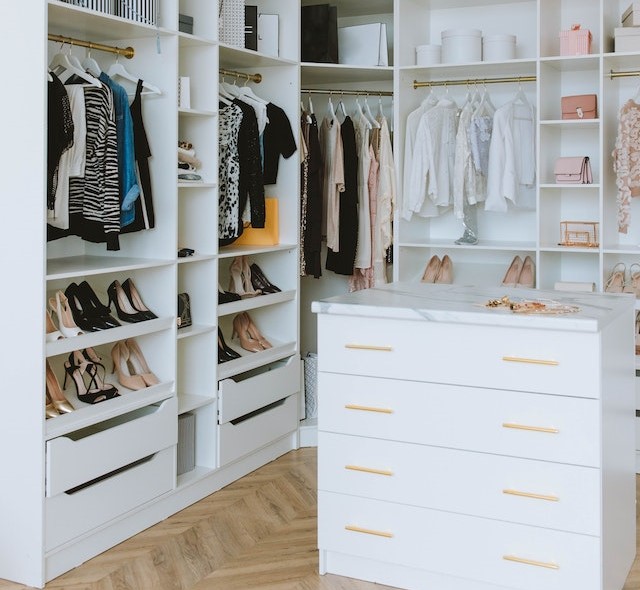
Here are some tips on how to optimize vertical space:
- Install Wall Shelves: Utilize wall shelves to take advantage of vertical space. Install floating shelves or mounted shelves to display books, decorative items, or to store frequently used items. Place shelves above desks, near entryways, or in the kitchen to maximize storage without taking up floor space.
- Use Vertical Storage Racks: Vertical storage racks are perfect for narrow spaces or areas with limited floor space. Install vertical storage racks in the kitchen to store baking sheets, cutting boards, or spices. In the bathroom, use a tall rack to store towels and toiletries. Look for specialized vertical storage solutions that cater to specific needs, such as shoe racks or magazine holders.
- Utilize Over-Door Storage: Make use of the space behind doors by installing over-door storage solutions. Hang over-door organizers or shoe racks to store small items, accessories, or shoes. This is especially useful in bedrooms, bathrooms, or closets where you can utilize the often-unused space behind doors.
- Install High-Mounted Cabinets: Extend your storage capabilities by installing high-mounted cabinets in the kitchen or laundry room. Take advantage of the vertical space above countertops or appliances to store kitchenware, cleaning supplies, or other items. Use a step ladder or stool to access the higher shelves when needed.
- Utilize Tall Bookcases or Storage Units: Opt for tall bookcases or storage units to maximize vertical storage. Place them in living areas, home offices, or bedrooms to store books, decor, or personal belongings. Ensure that the shelves are adjustable to accommodate different heights and sizes of items.
- Hang Wall-Mounted Hooks and Racks: Install wall-mounted hooks and racks to hang coats, hats, bags, keys, or other frequently used items. This keeps them off the floor and organized. Place hooks in entryways, bedrooms, or bathrooms to optimize vertical space and create a functional storage solution.
- Use Vertical Closet Organizers: Maximize the vertical space within closets by using vertical closet organizers. Install additional shelves, hanging rods, or drawer units to increase storage capacity. Utilize the full height of the closet to store clothing, shoes, or accessories.
- Employ Tension Rods: Tension rods are versatile and can be used to create additional vertical storage. Place tension rods in closets or cabinets to hang scarves, belts, or cleaning supplies. They can also be used in the kitchen to create additional storage for lids or cutting boards.
- Consider Lofted Beds or Bunk Beds: In bedrooms with limited floor space, consider lofted beds or bunk beds to free up valuable square footage. Lofted beds provide extra space underneath that can be used for storage or as a study area. Bunk beds allow for multiple sleeping areas while using vertical space efficiently.
- Think Vertically in Small Spaces: When decorating or organizing small spaces, think vertically. Hang artwork or mirrors higher on the walls to draw the eye upward and create a sense of spaciousness. Utilize wall-mounted storage solutions, such as hooks, shelves, or pegboards, to keep items off the floor and maximize available space.
By implementing these strategies, you can effectively maximize vertical space in your home and create additional storage areas. Remember to declutter regularly and maintain organized systems to ensure the best use of the vertical space you have available.
Label Everything
Labeling is a simple yet effective way to maintain an organized apartment. Use labels or tags to identify the contents of storage containers, boxes, or shelves. This makes it easy to locate specific items and ensures that everything has a designated place. Labeling can be done with adhesive labels, label makers, or even handwritten tags. Choose a labeling method that suits your preference and style.
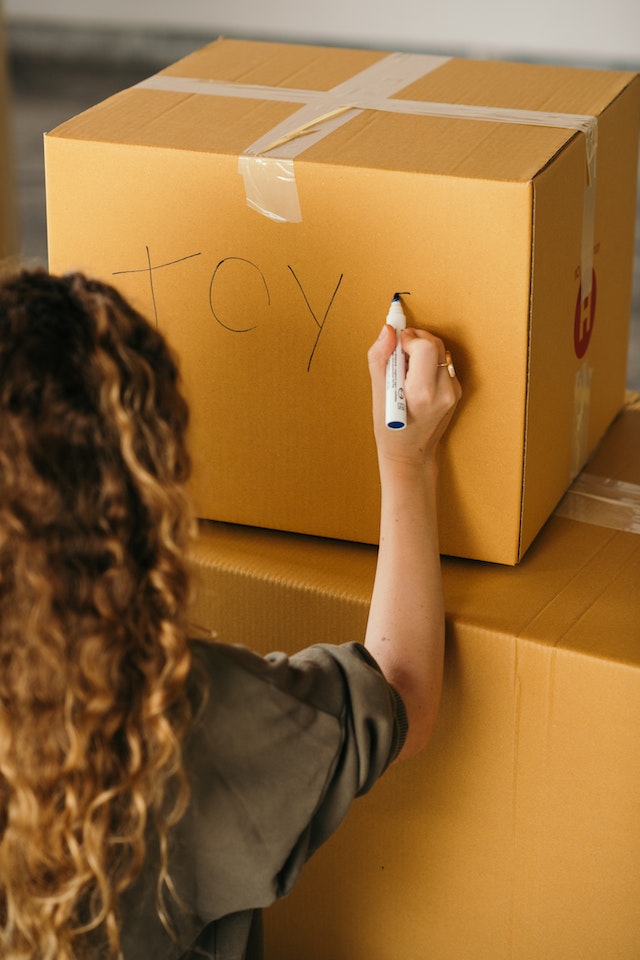
Here are some steps on how to label everything at home:
- Choose the Right Labeling Supplies: Select labeling supplies that suit your needs and the surfaces you’ll be labeling. Options include adhesive labels, label makers, sticky notes, chalkboard labels, or even masking tape and a marker. Consider the durability and longevity required for each labeling task.
- Decide on a Labeling System: Establish a consistent labeling system throughout your home. Decide on the categories or sections you want to label, such as kitchen items, office supplies, clothing, or storage containers. Determine the information you want to include on the labels, such as names, contents, or expiration dates.
- Use Clear and Legible Writing: Whether you’re handwriting labels or using a label maker, ensure that your writing is clear and legible. Use a permanent marker or a pen with bold ink. If using a label maker, select an appropriate font size and style that is easy to read.
- Start with High-Traffic Areas: Begin labeling items in high-traffic areas or spaces where organization is most crucial. This might include kitchen cabinets, pantry shelves, or storage bins in common areas. Labeling these areas first helps establish a sense of order and encourages the habit of labeling throughout your home.
- Categorize and Group Items: Group similar items together before labeling. For example, in the kitchen, label shelves or drawers for specific categories like baking supplies, spices, or utensils. This makes it easier to find items and maintain order within each category.
- Label Containers and Storage: Label storage containers, bins, or boxes to identify their contents. This is especially helpful for items stored in closets, garages, or attics. Clearly indicate what’s inside each container, making it easy to locate items when needed.
- Label Cords and Cables: To eliminate confusion with electronics, label cords and cables. Use colored labels or tag identifiers to match each device with its corresponding cable. This prevents tangled cords and makes it easier to identify which cord belongs to which device.
- Label Children’s Belongings: Labeling your children’s belongings is particularly helpful, especially for school supplies, clothing, or personal items. Use personalized labels or write their names on tags to avoid mix-ups and ensure items are easily identifiable.
- Consider Removable Labels: If you frequently change the contents of containers or if you prefer a more flexible labeling system, consider using removable labels. These allow for easy updates or relabeling without leaving residue or causing damage to surfaces.
- Maintain and Update Labels: Regularly review and update your labels as needed. Remove outdated or irrelevant labels, relabel containers when their contents change, and ensure that labels remain intact and readable over time.
Remember, the goal of labeling everything at home is to enhance organization, efficiency, and ease of use. Find a labeling system that works best for you and your household, and be consistent in applying labels throughout your home.
Create Zones
Establishing zones within your apartment helps maintain order and efficiency. Designate specific areas for different activities or purposes. For example, create a dedicated workspace with a desk and chair, a relaxation zone with a cozy reading nook, or a storage area for items that are used less frequently. Clearly define each zone using furniture arrangement, rugs, or dividers. This not only keeps items organized but also helps you find what you need quickly.
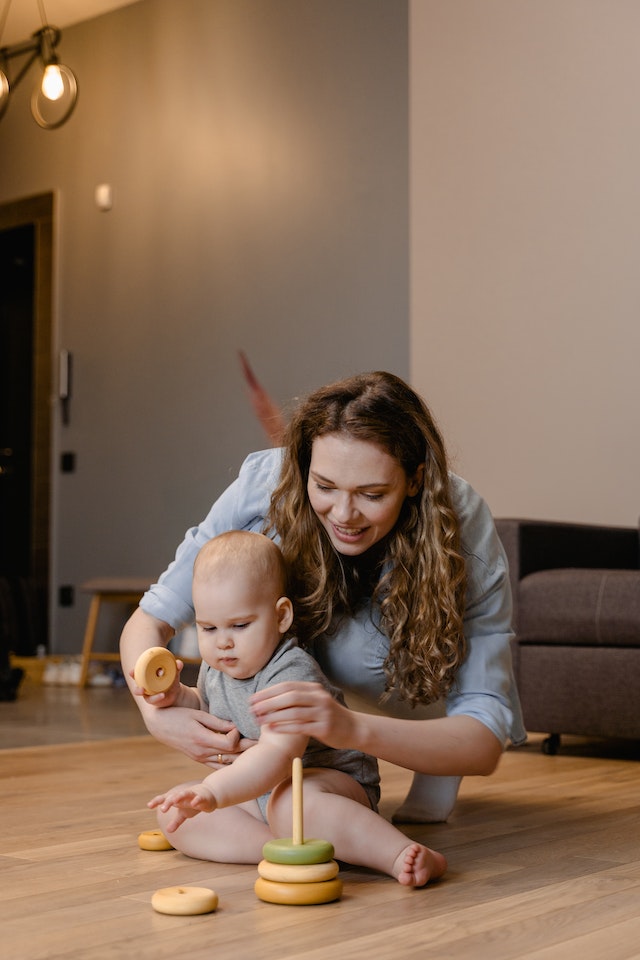
Here are some steps to guide you in creating zones at home:
- Assess Your Space: Evaluate the layout and functionality of each room in your home. Consider the activities you engage in regularly and identify areas that can be dedicated to specific functions.
- Identify Activities and Functions: Determine the activities or functions that you want to accommodate in your home. Common zones include living areas, workspaces, relaxation corners, dining areas, storage areas, or exercise spaces.
- Define the Purpose of Each Zone: Clearly define the purpose and boundaries of each zone. For example, a living area may be dedicated to entertainment and relaxation, while a workspace is solely for work-related activities. This clarity helps maintain organization and prevents activities from overlapping.
- Consider Traffic Flow: Take into account the flow of movement within your home when creating zones. Ensure that traffic patterns are clear and that there’s ample space to navigate between zones without obstruction.
- Utilize Furniture and Rugs: Arrange furniture and rugs to define the boundaries of each zone. Use sofas, bookshelves, or room dividers to create physical separations. Rugs can also delineate specific areas within a larger space, such as a dining area within an open-concept living room.
- Lighting and Ambiance: Incorporate appropriate lighting and ambiance for each zone. Install task lighting in work areas, such as desk lamps or under-cabinet lights. Use softer lighting in relaxation areas or dining spaces. Adjust lighting levels to suit the purpose and mood of each zone.
- Storage Solutions: Integrate storage solutions within each zone to keep items organized and readily accessible. Use bookshelves, baskets, or cabinets to store items specific to each zone. This ensures that items are conveniently located where they are needed.
- Visual Cues: Utilize visual cues to signify the boundaries of each zone. This can be achieved through the use of different wall colors, wallpaper, or artwork that distinguishes one area from another. Visual cues help reinforce the purpose of each zone.
- Maintain Clear Organization: Regularly declutter and organize each zone to maintain its functionality. Return items to their designated places after use to prevent clutter from encroaching on other zones. Periodically reassess the organization of each zone and make adjustments as needed.
- Flexibility and Adaptability: Allow for flexibility and adaptability within your zones. As your needs or circumstances change, be open to adjusting the purpose or layout of a zone. This ensures that your home remains functional and accommodates evolving lifestyle requirements.
Creating zones in your home enhances organization, functionality, and efficiency. By clearly defining the purpose of each area and utilizing furniture, lighting, and storage solutions, you can establish well-defined zones that contribute to a harmonious and organized living environment.
Use Drawer Organizers
Drawers can easily become cluttered and disorganized if not properly maintained. Utilize drawer dividers or organizers to keep items separated and categorized. In the bedroom, use dividers to create sections for socks, underwear, accessories, or other small clothing items. In the kitchen, use dividers to organize utensils, cutlery, or small gadgets. This ensures that each item has its designated place and prevents items from becoming jumbled or difficult to find.
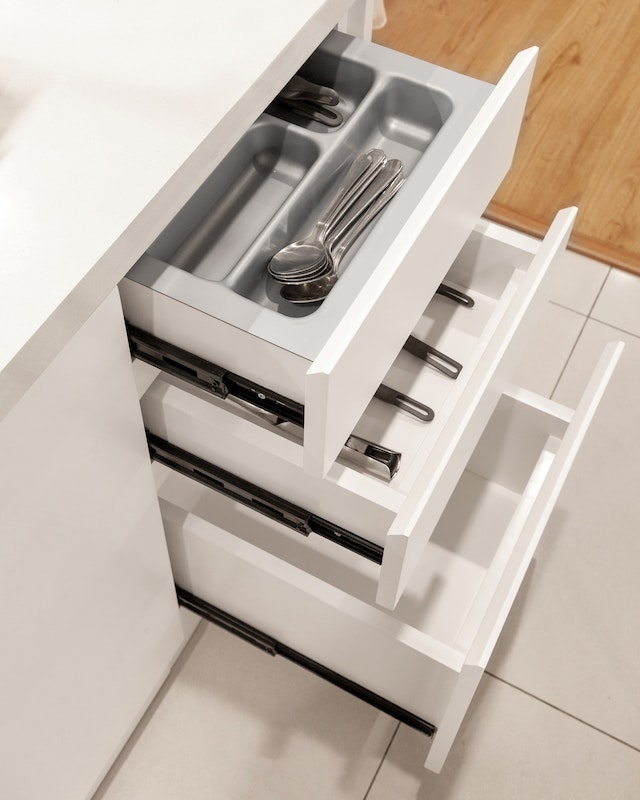
Here are some steps on how to effectively use drawer organizers at home:
- Assess Your Drawer Needs: Evaluate the contents of each drawer and consider how you want to organize them. Identify the specific types of items that need organizing, such as clothing, accessories, office supplies, or utensils.
- Select the Right Drawer Organizers: Choose drawer organizers that suit your needs and the dimensions of your drawers. There are various types available, including adjustable dividers, modular trays, or fabric bins. Consider the sizes and compartments that will work best for your specific items.
- Empty and Clean the Drawer: Start by emptying the drawer completely. Remove any existing organizers or items. Take the opportunity to clean the drawer, wiping away any dust or debris.
- Categorize and Sort Items: Categorize the items you plan to store in the drawer. Group similar items together, such as socks, underwear, ties, or office supplies. This helps determine the best layout for the organizers and makes it easier to find specific items.
- Arrange the Drawer Organizers: Begin placing the drawer organizers inside the drawer. Start with larger organizers first and adjust their positions to fit well. Consider the layout that works best for your items and drawer size. Arrange the organizers to accommodate different categories or sizes of items.
- Utilize Dividers and Compartments: Use dividers or compartments within the organizers to further separate and organize items. For example, use dividers in a utensil tray to separate forks, knives, and spoons. Adjust the dividers according to the sizes of the items you’re storing.
- Consider Visibility and Accessibility: Arrange items in a way that allows for easy visibility and accessibility. Store frequently used items towards the front of the drawer or in the most easily accessible compartments. Place less frequently used or bulkier items towards the back.
- Label or Label Each Compartment: If desired, label or use adhesive labels within the drawer organizers to identify the contents of each compartment. This can be particularly helpful for office supplies, small accessories, or items with similar appearances.
- Maintain Organization: Regularly maintain the organization of your drawer organizers. Return items to their designated compartments after use to keep the drawer tidy. Periodically reassess the contents and adjust the organizers if needed to accommodate any changes.
- Expand or Modify as Needed: As your needs evolve or change, be flexible in expanding or modifying your drawer organizers. Add or remove dividers, adjust compartment sizes, or consider additional organizers to accommodate new items or changing storage requirements.
By following these steps, you can effectively utilize drawer organizers to maintain an organized and functional space within your drawers. The organizers help prevent items from getting mixed up, making it easier to find what you need and keep your drawers tidy.
Optimize Closet Space
Closets are often a challenge to keep organized. Maximize closet space by utilizing various tools and techniques. Use hangers to hang clothing items, ensuring each hanger holds only one garment to prevent overcrowding. Invest in shoe racks or hanging organizers to maximize vertical storage. Use storage bins or boxes to keep smaller items neatly organized. Consider adding additional shelves or utilizing closet organizers to create more storage levels and compartments.
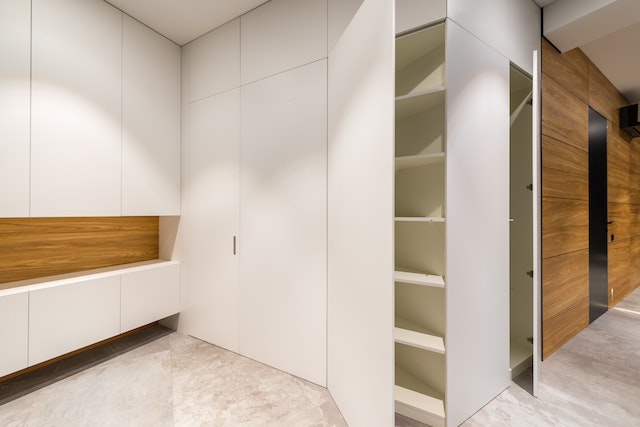
Here are some steps on how to maximize closet space at home:
- Declutter and Sort: Before optimizing your closet space, declutter and sort through your belongings. Remove items that you no longer need, use, or love. This will help create more space and make organizing more effective.
- Categorize Your Clothing: Categorize your clothing into groups such as shirts, pants, dresses, or seasonal items. This will help you visualize the amount of space needed for each category and plan accordingly.
- Utilize Slim Hangers: Replace bulky hangers with slim, space-saving hangers. Slim hangers take up less space, allowing you to fit more clothing items in your closet. They also provide a uniform look and prevent clothes from slipping off.
- Double Hanging Rods: Install a second hanging rod below the existing one to double your hanging space. This is particularly useful for shorter clothing items, such as shirts or skirts. Use hangers with clips to hang skirts or pants on the lower rod.
- Use Cascading Hangers or S-Shape Hooks: Cascading hangers or S-shape hooks allow you to hang multiple items vertically from a single hanger. This is ideal for organizing scarves, belts, or tank tops. It maximizes vertical space and keeps items easily accessible.
- Invest in Closet Organizers: Install closet organizers or modular systems to optimize space utilization. These systems typically include shelves, drawers, and hanging rods that can be customized to fit your specific needs. They provide designated areas for different items, including shoes, folded clothes, and accessories.
- Utilize Door Space: Make use of the back of the closet door by installing hooks, over-the-door shoe organizers, or hanging storage pockets. This space can be used for storing accessories, scarves, or shoes, keeping them easily accessible and freeing up space inside the closet.
- Stack Sweaters or Foldable Items: Rather than hanging bulky sweaters, stack them neatly on shelves or in storage bins. Foldable items, such as t-shirts or jeans, can also be organized in stacks or folded and stored in drawers. This frees up hanging space for other items.
- Use Clear Storage Bins: Use clear storage bins or boxes to store items that are not frequently used or are seasonal. Label each bin to easily identify its contents. Storing items in bins helps keep the closet organized and prevents dust accumulation.
- Maximize Vertical Space: Take advantage of the vertical space in your closet by installing additional shelves or using stackable storage solutions. Store items such as handbags, folded clothes, or shoeboxes on the upper shelves. Use shelf dividers to keep stacks of clothing or accessories neat and organized.
- Don’t Forget the Floor Space: Utilize the floor space in your closet for shoe racks, storage baskets, or drawers. Store shoes in an organized manner, either in shoe racks or clear shoe boxes. Use storage baskets or bins for items that don’t need to be hung or stacked.
- Regularly Maintain and Declutter: Regularly maintain your closet by decluttering and reassessing your belongings. Donate or sell items you no longer need or use. Keep the closet organized by returning items to their designated places after use.
By following these steps, you can optimize your closet space and create a well-organized storage solution. Maximize vertical and horizontal space, utilize organizers, and maintain regular upkeep to keep your closet functional and clutter-free.
Implement a Mail Organization System
Incoming mail and bills can quickly pile up and create clutter. Create a designated area for mail and bills, such as a small desk or wall-mounted organizer. Use folders or organizers to sort and store important documents, bills, or receipts. Establish a routine for going through mail regularly, discarding junk mail, and organizing important papers. This system ensures that mail is properly managed and reduces the risk of misplacing important documents.
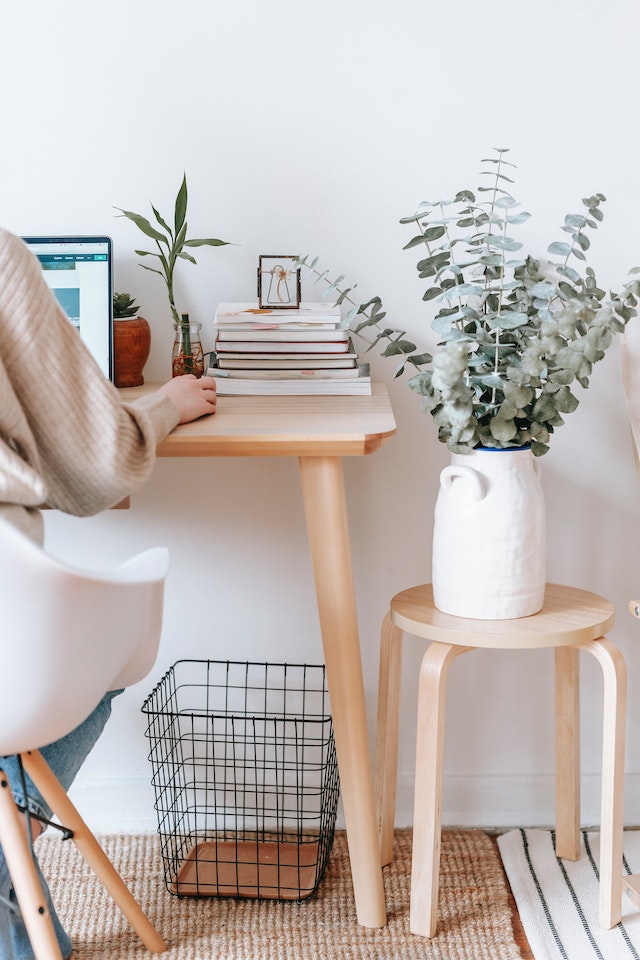
Here are steps to help you establish an effective mail organization system:
- Designate a Mail Station: Choose a specific area in your home as a dedicated mail station. It can be a small desk, a wall-mounted organizer, or a table near the entryway. This will serve as the central hub for all incoming mail and related items.
- Gather Necessary Supplies: Gather supplies such as mail trays, folders, envelopes, a shredder, a recycling bin, and a pen or marker for labeling. Having these items readily available at your mail station will help you stay organized.
- Sort and Separate: Create separate categories or folders for different types of mail. Common categories include bills, personal correspondence, invitations, coupons, and important documents. Sort incoming mail immediately upon receipt to prevent it from piling up.
- Discard Unwanted Mail: Discard unwanted or junk mail immediately. Separate it into a designated recycling bin or shredder to dispose of sensitive information securely. Avoid letting unwanted mail accumulate and clutter your space.
- Create a Filing System: Establish a filing system for important documents, such as insurance policies, tax information, or medical records. Use labeled folders or file organizers to keep these documents organized and easily accessible when needed.
- Use a Calendar or Reminder System: Keep track of important due dates or deadlines by using a calendar or reminder system. Mark payment due dates, events, or other time-sensitive information to ensure timely action and avoid missed deadlines.
- Create a Bill-Paying Routine: Establish a regular routine for paying bills. Set specific days each month to review and pay bills. This routine helps ensure that bills are addressed promptly and avoids late fees or missed payments.
- Digitalize or Go Paperless: Whenever possible, opt for digital or paperless billing. Sign up for online statements and electronic payment options to reduce the amount of physical mail that enters your home. Digitize important documents by scanning them and storing them securely on your computer or in the cloud.
- Keep Track of Important Contacts: Maintain a contact list of important numbers and addresses, such as utility companies, insurance providers, or financial institutions. Store this information in a designated folder or digital file for quick reference when needed.
- Regular Maintenance: Regularly declutter your mail station and file system. Discard or shred outdated documents, update contact information, and review your filing system to ensure it remains organized and efficient.
By implementing these steps, you can establish a mail organization system that helps you stay on top of incoming mail, bills, and important documents. This system will streamline the process, reduce clutter, and ensure that you can easily access the information you need when you need it.
Store Seasonal Items
Seasonal items, such as holiday decorations or winter clothing, can take up valuable space when not in use. Keep these items organized by storing them in labeled containers or vacuum-sealed bags. Clearly mark the contents of each container to make retrieval easier. Store seasonal items in a designated area, such as a storage closet, attic, or under-bed storage, to keep them out of the way and free up space in your everyday living areas.

Here are some steps to help you store seasonal items effectively:
- Sort and Declutter: Begin by sorting through your seasonal items and decluttering. Separate items into categories, such as clothing, decorations, sports equipment, or outdoor gear. Discard or donate items that are damaged, no longer used, or no longer bring you joy.
- Clean and Prepare Items: Before storing, clean and properly prepare your seasonal items. Wash and dry clothing, clean and dry outdoor gear, and ensure decorations are dust-free. This helps preserve the quality of the items during storage.
- Use Clear, Labeled Containers: Invest in clear plastic storage containers with secure lids for storing seasonal items. Clear containers allow you to easily see the contents without having to open each one. Label each container with the specific category of items it contains, such as “Winter Clothes” or “Holiday Decorations.”
- Prioritize Accessibility: Store items you’ll need first or most frequently towards the front of your storage area. This way, you can easily access them when the season arrives. Place less frequently used items towards the back or in harder-to-reach areas.
- Utilize Vertical Space: Make use of vertical space in your storage area. Stack containers or invest in shelving units to maximize storage capacity. This allows you to store more items in a smaller footprint.
- Protect Delicate or Fragile Items: For delicate or fragile items, provide extra protection. Wrap breakable decorations in bubble wrap or tissue paper and place them in sturdy containers. For clothing, use garment bags or acid-free tissue paper to prevent damage.
- Climate-Controlled Storage: If available, consider using a climate-controlled storage area for temperature-sensitive items. Extreme temperatures or humidity can damage certain materials, so storing them in a controlled environment helps preserve their quality.
- Utilize Under-Bed Storage: Take advantage of under-bed storage for seasonal items that don’t require frequent access. Use vacuum-sealed bags or shallow bins to store clothing, linens, or bedding. This is a space-saving solution for items that are out of season.
- Consider Storage Furniture: Opt for dual-purpose furniture that provides storage space, such as ottomans, benches, or coffee tables with hidden compartments. These pieces help maximize storage while serving functional purposes in your living spaces.
- Maintain an Inventory List: Keep a detailed inventory list of the items you store and their corresponding containers. This helps you easily locate specific items when you need them and avoid unnecessary digging or opening multiple containers.
- Regularly Reassess and Rotate: Periodically reassess your seasonal items and make adjustments as needed. As your needs change or your belongings evolve, rotate items in and out of storage to keep the space organized and efficient.
By following these steps, you can store your seasonal items in a way that protects them and maximizes your home’s storage capacity. Proper storage not only keeps your living spaces clutter-free but also ensures that your seasonal items remain in good condition for future use.
Establish Daily Habits
Daily habits are key to maintaining an organized apartment. Dedicate a few minutes each day to tidy up and put things back in their designated places. Make your bed in the morning to start the day with a clean and organized space. Wash dishes and wipe down countertops after each meal to prevent clutter from accumulating in the kitchen. Establish routines for cleaning, organizing, and decluttering specific areas regularly to maintain a tidy living environment.
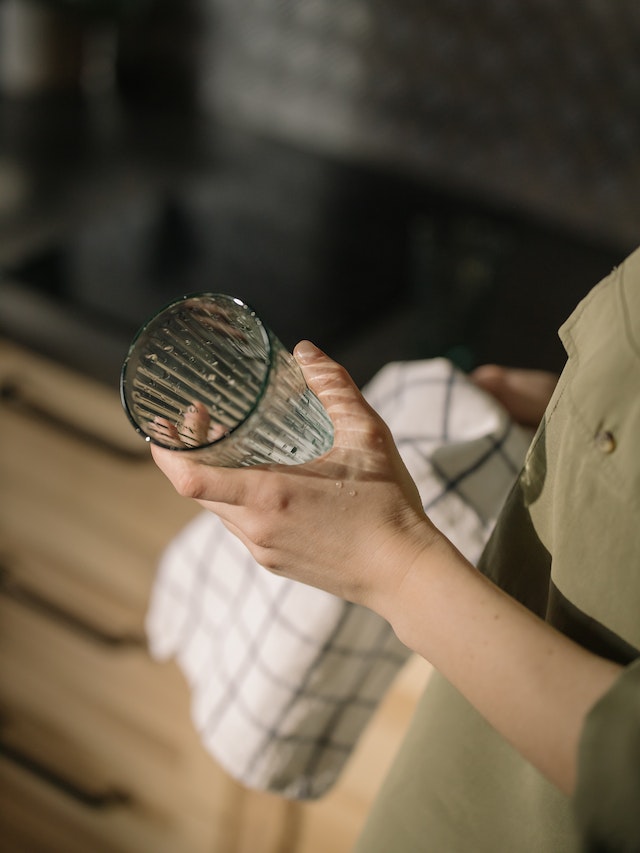
Here are some habits you can incorporate into your daily routine:
- Make Your Bed: Start your day by making your bed. It sets a positive tone for the rest of your day and instantly makes your bedroom look neater. It’s a simple task that can have a big impact on the overall appearance of your living space.
- Clean as You Go: Adopt a “clean as you go” mindset throughout the day. Put away items after use, wipe down surfaces, and tidy up as you move from one room to another. Taking small, immediate actions to maintain cleanliness prevents messes from piling up.
- Set a Five-Minute Rule: Dedicate five minutes each day to tackle a specific task or area. It could be clearing off a countertop, organizing a drawer, or decluttering a small area. Consistently devoting just five minutes a day to these tasks helps prevent clutter from accumulating.
- Establish a Mail Routine: Designate a specific time each day to go through your mail. Open, sort, and discard or file it immediately. Avoid letting mail pile up and create clutter. Consider going paperless for bills and statements to reduce incoming physical mail.
- Put Things Back in Their Place: Cultivate a habit of putting things back in their designated places after use. Return items to their proper locations, whether it’s clothing, kitchenware, or personal belongings. This prevents items from accumulating in random spots and maintains organization.
- Do a Quick Evening Tidy-Up: Before winding down for the night, take a few minutes to do a quick tidy-up around your apartment. Put away any items that have been left out, fluff cushions, and straighten surfaces. This ensures you wake up to a clean and organized space the next morning.
- Practice the “One In, One Out” Rule: Adopt the “one in, one out” rule for new items. Whenever you bring something new into your apartment, commit to removing an equivalent item. This helps prevent unnecessary accumulation and ensures you maintain a balance in your belongings.
- Regularly Declutter: Dedicate time each week or month to decluttering specific areas or items. This could be a closet, a drawer, or a specific category of belongings. Regular decluttering sessions help keep your apartment organized and prevent items from overcrowding your space.
- Create Systems for Daily Chores: Establish systems for daily chores, such as doing a load of laundry each morning or washing dishes after every meal. By incorporating these tasks into your daily routine, you avoid the buildup of dirty laundry or a pile-up of dishes.
- Utilize Checklists or Apps: Use checklists or apps to track your daily organizing tasks. This helps you stay accountable and ensures you don’t overlook any important tasks. Set reminders or alarms if needed to stay on top of your daily habits.
Remember, consistency is key when establishing daily habits. Start with a few habits that are manageable and gradually incorporate more into your routine. Over time, these habits will become second nature, and maintaining an organized apartment will become effortless.
Final Words of Advice
By incorporating these simple ideas into your apartment organization routine, you can create a more organized and functional living space. Remember, consistency and regular maintenance are key to keeping your apartment clutter-free and enjoyable to live in.
Read more posts in Life.
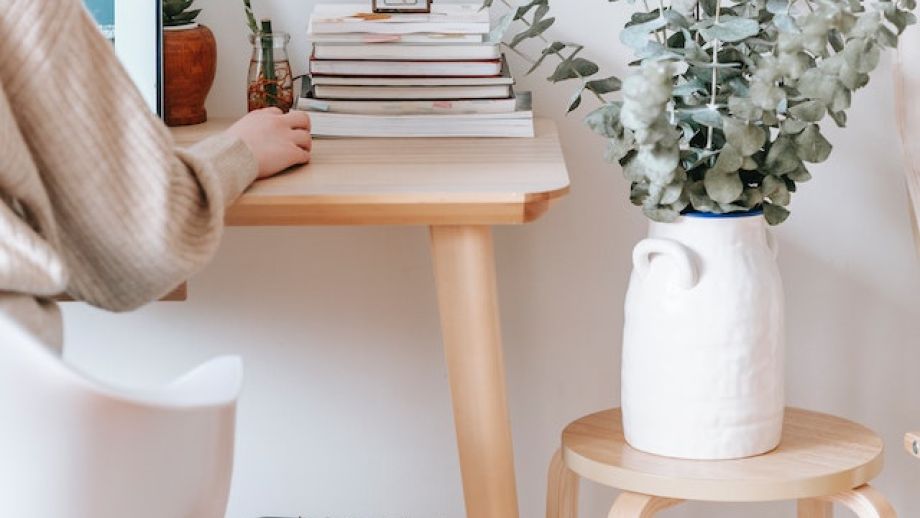

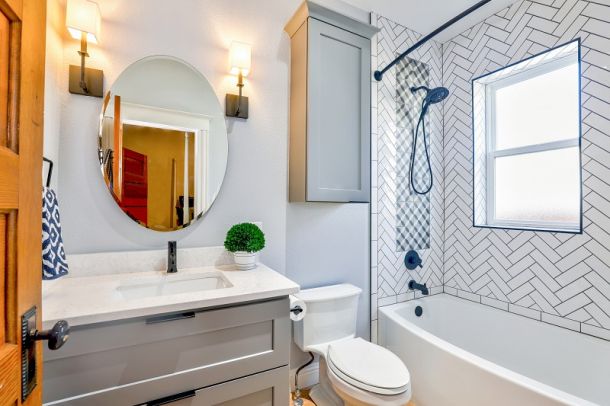


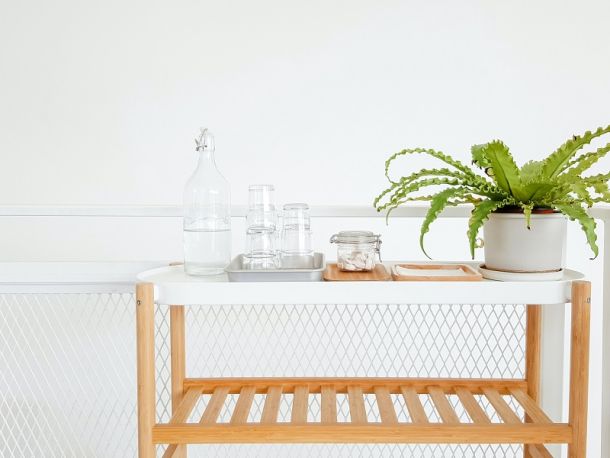
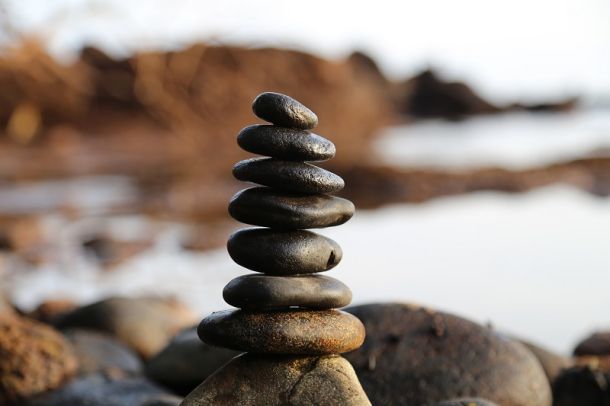












[…] a more organized and functional living space 10 Apartment Organization and Storage Tips Implementing tips and ideas for apartment organization and storage can greatly […]
[…] as it goes beyond mere aesthetics and influences various aspects of our lives. A thoughtfully decorated living space creates an atmosphere that promotes comfort, relaxation, and well-being. It becomes a sanctuary […]